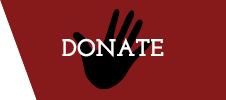The virus has exposed the realities and conditions of financial insecurity in America. But, it has also exposed how misunderstood conceptions of poverty are, what poverty looks like, and who is at risk.
Consider this: before the pandemic, 140 million Americas could not afford a $400 emergency, but today our risks are greater. One day at the office, a trip to the grocery store, or 10 minutes at a gas station puts you at risk for contracting the virus. Which, in turn, could mean two weeks or more out of work and thousands of dollars in hospital fees.
All communities are vulnerable – your friends, family, neighbors, and coworkers may be closer to poverty than you think. However, low-income households are at an even greater disadvantage. Check out this 2020 survey by the Human Rights Watch on the disproportionate struggle to meet basic needs:
